In all my years of model building and painting, the Bandai Gundam/Evangelion models have offered the highest inertia-coefficient of any equation relating to a model kit's work progress in my project pipeline. That's why it has taken more than two years since the initial unboxing for work to finally start on the Bandai LM-HG Grade Evangelion EVA-01 Test Type plastic model kit. And there is a reason why the aforementioned inertia-coefficient is high as I'll explain below.
.jpg) |
Bandai LM-HG Evangelion EVA-01 Test Type work-in-progress: EVA parts prepped for paint
|
So what is it with these Bandai Gundam/Evangelion kits that make them such a personal mental block to a project making any headway. If I plan to fully paint the said kits, then the key reason lies solely in my approach. When dealing with either Gundam- or Evagelion-type plastic model kits, I usually paint individual parts or sub-assemblies of related parts before I carry out final assembly.
.jpg) |
Prepped EVA-01 parts - all labeled and kept in groups corresponding to body areas
|
And because such kits comprise of numerous parts that come in many different sizes, careful planning and organization of said parts are a must. Here is what I usually do:
- analyze which items must be painted as individual parts and which can be sub-assembled before painting with the latter making it less time-consuming when painting;
- prep each part by removing mold lines and nub marks as well as clean them;
- label each individual part or sub-assembly to know which part is what;
- analyze which parts/sub-assemblies needs to be held by alligator clip sticks, which can be left partially attached to the sprue, and which must be attached via blue tack onto plastic bases in order to secure them for the painting process;
- prime all the individual parts/sub-assemblies, and then paint them;
- top coat the individual parts/sub-assemblies, usually after applying decals/stickers;
- undertake the final assembly process.
.jpg) |
Some EVA parts that'll be attached to sprues or on plastic caps prior to painting
|
As you can see from the long to-do list in the preceding paragraph, the sheer scope of work involved sometimes make me not want to even start at all. But I eventually get there, mentally, and the work finally begins. For now, I am concentrating on the EVA-01 unit itself so not all the model kit's parts have been prepped for paint. Three main sections of the kit have yet to be worked on namely the Shinji Ikari figurine, the EVA's weapons, as well as the EVA's power plug and umbilical power cable. These accessory parts will be worked on only after the Evangelion unit itself (i.e. EVA-01 in this case) has been completed. Color schemes for the EVA-01, its accessories, and the figurine are different enough that I am not comprising on efficiency if I work on the latter two at a later date.
.jpg) |
Sprues that have been stripped of parts that are in turn prepped for paint
|
.jpg) |
Sprues with the Shinji figurine, the EVA-01's weapons and its power connector/cable
|
Shown below are parts that are already cut from the sprue, mold lines removed, and surfaces cleaned, and individually labeled where applicable/possible. All parts and sub-assemblies were subsequently grouped together based on areas of the body e.g. left leg, right arm, torso, etc. Eventually the individual parts and sub-assemblies will have to be secured using alligator clip sticks or using blu tack to attach them onto plastic bases. This is done so that the parts/sub-assemblies can be easily manipulated during the painting process without accidentally damaging painted surfaces.
.jpg) |
EVA-01's arm/shoulder parts: a closer and more detailed look
|
.jpg) |
EVA-01's leg/foot parts: a closer and more detailed look
|
.jpg) |
| EVA-01's cockpit and torso parts: a closer and more detailed look |
.jpg) |
| EVA-01's abdomen/lumbar and head parts: a closer and more detailed look |
With plans to paint the EVA unit in unconventional candy metallic colors, I have test painted some spoons with the colors I'm thinking of using. Shown below are spoons with the candy metallic colors placed next to the molded plastic colors that they will be replacing.
.jpg) |
Plastic versus Candy Metallic: comparison of the orange yellow, green, and purple hues
|
.jpg) |
| Plastic versus Candy Metallic: comparison of the blue and black hues |
Below is a video of a quick look at the prepped parts as well as a comparison between the original plastic molded colors versus my planned candy metallic paint colors.
While only prep work has been done on the EVA-01 unit, for me mentally, a huge obstacle has been overcome. Soon I should be able to begin painting the EVA-01 parts and sub-assemblies to kick-start a series of Neon Genesis Evangelion projects that I have planned. But before that I'll be carrying out the final assembly of the Star Wars Speeder Bike (sans decals) so that should make it into the next post if I can finish editing the accompanying video in time. Until then stay safe, and be well.
.jpg)
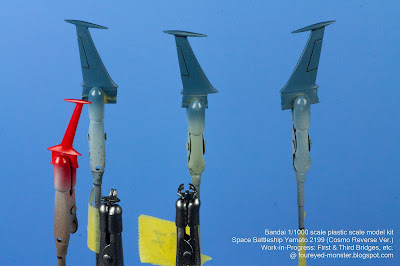.jpg)
.jpg)
.jpg)
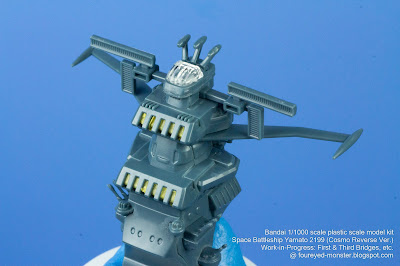.jpg)
.jpg)
.jpg)
.jpg)
.jpg)
.jpg)
.jpg)
.jpg)
.jpg)
.jpg)
.jpg)
.jpg)
.jpg)
.jpg)
.jpg)
.jpg)



.jpg)
.jpg)
.jpg)
.jpg)
.jpg)
.jpg)
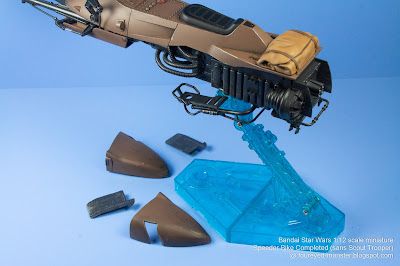.jpg)
.jpg)
.jpg)
.jpg)
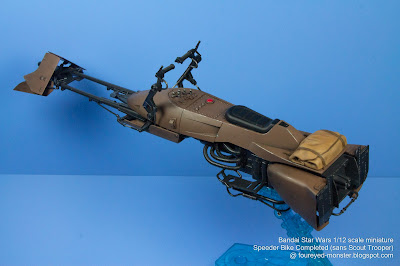.jpg)
.jpg)
.jpg)
.jpg)
.jpg)
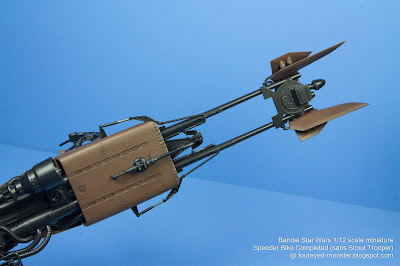.jpg)
.jpg)
.jpg)
.jpg)

.JPG)

.jpg)
.jpg)
.jpg)
.jpg)
.jpg)
.jpg)
.jpg)
.jpg)
.jpg)
.jpg)
.jpg)